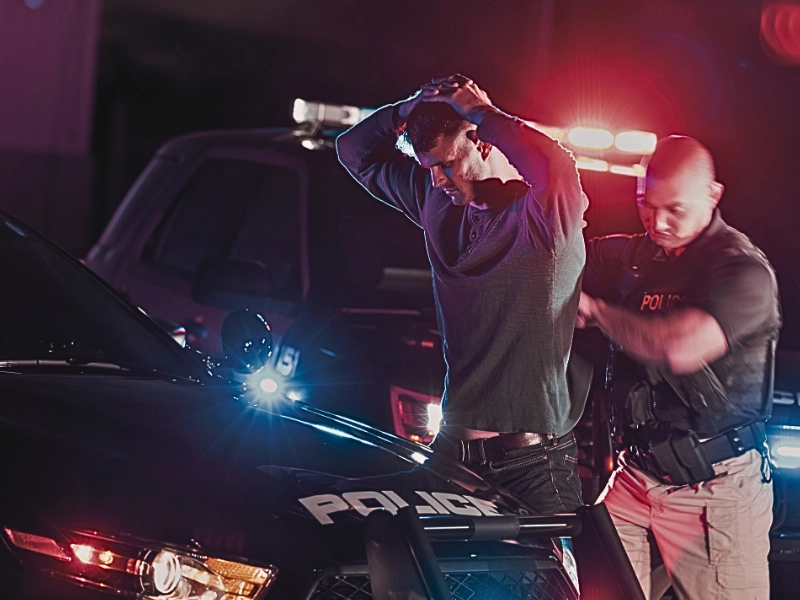In Minnesota, reasonable force may be legally used as self-defense in an unprovoked attack when the person can prove that his/her actions are justified for self-protection against bodily harm and certain conditions existed. When self-defense is successfully proven, defendants often receive reduced charges or sentences.
Table of Contents
Justifiable Self-Defense
A self-defense claim is usually a statutory defense used in cases of criminal justifiable homicide, assault, and battery. When self-defense is proven, it can reduce a person’s charges or sentence if charged with a crime. Depending on the circumstances, an assault lawyer can use a self-defense claim as a perfect or imperfect defense. Imperfect self-defense is an option when a defendant has an honest, yet reasonable belief that force is necessary to defend against injury or death. An imperfect defense can reduce the severity of an offense, but it does not eliminate the charges or result in acquittal. When justified by self-defense, defendants who commit criminal homicide are often acquitted. They may also get a reduction in charges of first-degree murder to second-degree or third-degree murder, or murder charges reduced to manslaughter charges.
To successfully claim self-defense, four factors must be proven:
- The defendant faced an unprovoked attack
- There was an imminent threat of bodily harm or death to the defendant
- The defendant used a reasonable degree of force under the circumstances
- The defendant had reasonable fear of injury or death without self-defense measures
Proving imminent attack is important for a self-defense claim. Imminent attack means that the attack was sudden and immediate and will not occur in the future. If an attack on the defendant occurred in the past, or if the defendant is threatened with future attack, using force against the perpetrator is considered retaliatory and self-defense cannot be claimed.
Some courts use the imminence requirement in domestic violence cases. For example, if a husband regularly uses violence or force against his wife, the wife can claim threats of imminent bodily harm as a defense. Minnesota recognizes the battered wife defense and allows a battered wife to use force against her husband. The wife can claim self-defense for her actions, even if injuries are not immediate. A prosecuting attorney and a defense assault lawyer may use expert testimony to describe battered wife syndrome and its characteristics in court.
The Use of Deadly Force
While a self-defense case involving a taser may be easier to defend, there are special requirements in most states that govern the use of deadly force and self-defense. Deadly force is defined by law as any force that could potentially cause death, but a person does not have to die for the force to be considered lethal. Deadly force includes the use of lethal weapons such as guns, knives, motor vehicles, or bare hands when there is a disparity in size between involved persons.
In most cases, a defendant who initiates an attack with force against another person cannot claim self-defense. In some cases, a defendant can still claim self-defense if he/she is the aggressor in an attack. If the defendant withdraws from the attack and the other person persists, or if the attacked person responds with excessive force, a self-defense claim may still be used. In some jurisdictions, even if the defendant initiates the attack, the other person is not allowed to respond with excessive force or deadly force, if the defendant does not use deadly force.
While there is no Minnesota stand your ground law, the use of deadly force must be legally justified when claiming self-defense:
- The defendant must feel reasonable and immediate danger of bodily harm or death
- The defendant must be a reluctant participant
- The defendant must have no reasonable means of retreat
- The defendant must use deadly force as a last resort
Immediate Danger of Bodily Harm or Death
The threat of danger and bodily harm or death must be immediate, and the attacker must have immediate means and opportunity to carry out his/her threat. A verbal threat of injury or death is not sufficient. The court will look at the size of the attacker and victim, as well as the proximity of the attacker to the victim.
Reluctant Participant
Minnesota law stipulates that a person can’t initiate an assault, then shoot the other person because they were losing the fight. In a deadly force situation, a defendant can’t be the aggressor or the person who initiated the attack.
No Reasonable Means of Retreat
In Minnesota, if a person is attacked outside his/her home, there must be no reasonable or safe means of retreat to justify the use of deadly force as self-defense. If wounding the attacker allows an opportunity to retreat safely, the defendant must retreat rather than use deadly force.
Deadly Force as a Last Resort
The law requires that if a defendant can stop a threat with something less than deadly force, he/she must do so. The size and strength of the attacker(s) and/or victim(s) will be considered.






